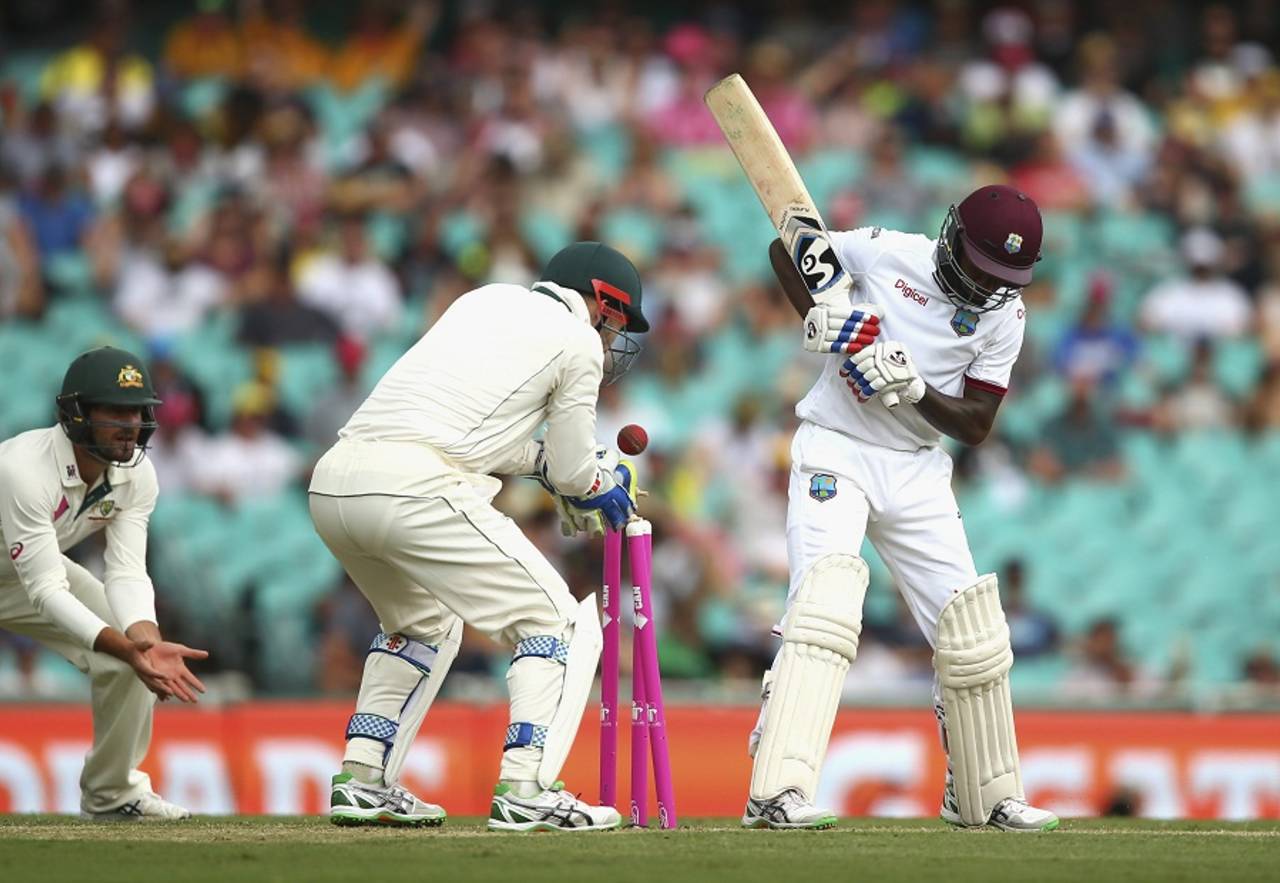The pros and cons of the proposed two-tier system
With the ICC's proposal of a two-tier Test system shelved, ESPNcricinfo looks at the pros and cons the system might have had
ESPNcricinfo staff
07-Sep-2016

If the proposed two-tier system had been brought into effect, an eighth-ranked West Indies would have been able to play third-placed Australia only if they were competitive enough to progress to the first tier • Cricket Australia/Getty Images
The two-tier idea for Test cricket that was shelved at the ICC chief executives committee meeting in Dubai proposed to have the top seven ranked sides in the first tier, and the bottom three sides in the second tier along with Afghanistan and Ireland. ESPNcricinfo lists the pros and cons the system might have had.
Benefits
- The system would have given each Test series a context greater than just the bilateral trophy. Teams would have been encouraged to strive for the best possible result to improve their standing in the tier.
- Increased opportunities for Associates to play long-form cricket and grow in competitiveness. Ireland and Afghanistan were to be the first Associate teams in the second tier, but there would have been the chance for the others to break into the second tier through a promotion and relegation system.
- Better competitiveness in Test cricket with closer-matched teams playing each other, making it a more interesting contest for fans. For example, West Indies at No. 8 in the rankings would be able to play third-placed Australia only if they became competitive enough to climb into the top tier.
Drawbacks
- A danger of widening the gulf between the top and bottom sides. Without playing higher-ranked teams, there was the chance the Full Members in the bottom tier would struggle to improve their Test cricket. Also, without the incentive of playing the best opponents, players might have increasingly been lost to the T20 circuit.
- A concern the rich would become richer and the poor would become poorer. Without India, England and Australia (currently in the top tier) playing the bottom ranked teams, there was a danger that those boards would suffer financially. If there was to be a system of compensation to make up for a loss of TV earnings, it was not detailed in public.
- Since the top-tier teams were meant to be obliged to play the bottom-tier teams occasionally, there would have been a danger of extremely lopsided contests, and the possibility of skewed records.